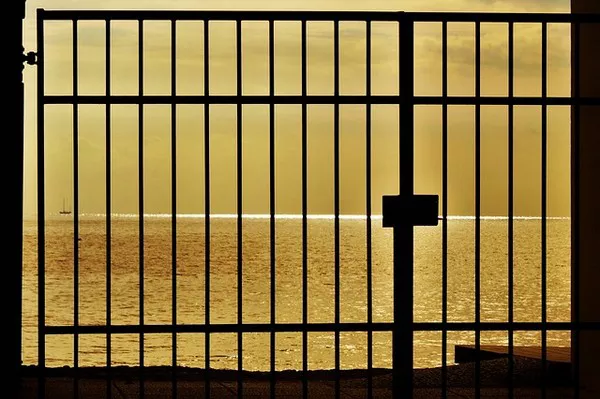The allure of gold has drawn adventurers and prospectors to rivers and streams for centuries. Whether you’re a hobbyist or an aspiring prospector, the ability to spot gold in a river can be both rewarding and lucrative. This comprehensive guide aims to provide you with the knowledge and techniques required to effectively identify and extract gold from riverbeds.
Understanding Gold Deposits
Gold is often found in areas where geological processes have deposited it over millions of years. The most common type of gold deposit is placer gold, which is found in alluvial deposits formed by water movement. These deposits are typically found in riverbeds, streams, and along riverbanks.
Types of Gold Deposits:
Placer Deposits: Formed by the action of water, placer deposits are the most common type of gold deposit found in rivers. They occur when gold particles are eroded from primary sources and transported by water, eventually settling in riverbeds and streambeds.
Lode Deposits: These are primary deposits found in veins of rock and often require mining to extract. Erosion of lode deposits can lead to placer deposits downstream.
Identifying Potential Gold-Bearing Areas
To effectively spot gold in a river, it’s essential to understand the key areas where gold is likely to accumulate. Here are the main indicators and geological features to look for:
Inside Bends of Rivers: Gold is heavy and tends to settle in areas where the water flow slows down. Inside bends of rivers, where the current decreases, are prime spots for gold accumulation.
Behind Large Rocks and Boulders: Obstructions in the river create eddies and reduce the water’s speed, causing gold to settle. Look behind large rocks and boulders in the riverbed.
Crevices and Cracks in Bedrock: Gold can get trapped in crevices and cracks in the bedrock. Inspect these areas closely, as they can be rich in gold deposits.
Black Sand Concentrations: Black sand, which is often magnetite or hematite, is a good indicator of gold. Gold is frequently found in close proximity to black sand due to their similar densities.
Pay Streaks: These are concentrations of gold particles found in specific layers or streaks in the riverbed. They are often formed where the water flow slows down or changes direction.
Tools and Equipment for Gold Prospecting
Proper equipment is essential for successful gold prospecting. Here are some of the key tools you will need:
Gold Pan: The most basic tool for gold prospecting, a gold pan is used to separate gold particles from sand and gravel. A good technique involves swirling water in the pan to allow the heavier gold to settle at the bottom.
Sluice Box: A sluice box is a long, narrow box that uses water flow to separate gold from gravel. It’s more efficient than a gold pan for processing larger quantities of material.
Snuffer Bottle: This small, plastic bottle is used to suck up small gold particles from the pan.
Classifiers: Screens used to separate material by size. Classifiers help remove larger rocks and debris, allowing you to focus on finer material where gold is more likely to be found.
Metal Detector: A metal detector can help locate larger nuggets or veins of gold in the riverbed.
Crevice Tools: These are used to extract gold from cracks and crevices in the bedrock.
Techniques for Gold Prospecting
With the right tools in hand, the next step is to employ effective techniques for prospecting. Here are some methods to maximize your chances of finding gold:
Panning: Fill your pan with material from a likely spot, then submerge it in water and shake it gently. The heavier gold particles will settle at the bottom while lighter materials wash away. Repeating this process will help concentrate the gold.
Sluicing: Set up your sluice box in a spot with a steady flow of water. Scoop material into the sluice, and the flowing water will help separate the gold from gravel. Regularly check the riffles in the sluice box, as gold will get trapped there.
Crevicing: Use crevice tools to scrape material from cracks in the bedrock. Pan the collected material to separate the gold.
Dredging: For larger operations, a dredge can be used to vacuum material from the riverbed. This technique requires more equipment and permits, but it can be very effective in gold-rich areas.
Metal Detecting: Use a metal detector to scan the riverbed and banks for larger gold nuggets. This technique is especially useful in areas where placer gold is known to occur.
Safety and Environmental Considerations
Gold prospecting can be an exciting and rewarding activity, but it’s important to prioritize safety and environmental responsibility. Here are some key considerations:
Safety Gear: Wear appropriate safety gear, including gloves, boots, and eye protection. Be cautious of slippery rocks and fast-moving water.
Permits and Regulations: Ensure you have the necessary permits and are aware of local regulations regarding gold prospecting. Some areas may be protected or restricted.
Environmental Impact: Minimize your impact on the environment. Avoid disrupting wildlife habitats and leave the area as you found it. Refill any holes and dispose of trash properly.
Water Safety: Be aware of the water conditions and weather forecast. High water levels and fast currents can be dangerous.
See also How Much is 1 Kilo of Gold Worth?
Conclusion
Spotting gold in a river requires a combination of knowledge, skill, and the right equipment. By understanding the geological processes that concentrate gold and identifying key areas in the river where gold is likely to accumulate, you can increase your chances of success. Employing effective prospecting techniques, such as panning, sluicing, and crevicing, along with maintaining a strong focus on safety and environmental responsibility, will ensure a rewarding and sustainable gold prospecting experience. Whether you are a seasoned prospector or a beginner, the thrill of discovering gold in a river is an experience that combines adventure, skill, and a connection to nature’s ancient processes. Happy prospecting!


